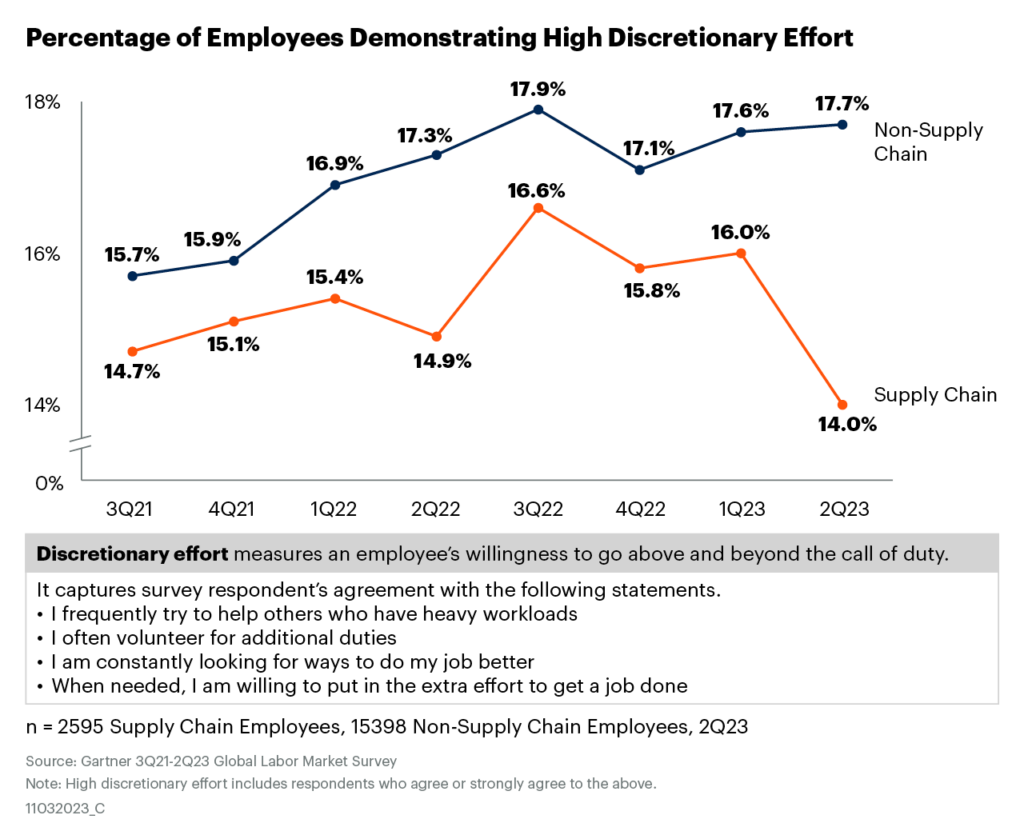Our hosts at Diageo view product innovation, supply chain operations and sustainability as parts of a whole and their operating committee members gave the crowd a master class on how to weave those threads into a cohesive fabric.
A broader look at the supply chain community reveals a continuum of perspectives on integrating sustainability into innovation. Simply put, some are playing defence — reacting to regulations and other brand risks — while others go on offence and leverage sustainable inputs, products and packaging to drive growth. The most forward-thinking make sustainability and circular economy principles key features of new-to-world offerings to capture business at the frontier.

Supply chain talent
Supply chain risks often cascade from underlying points of disruption. Many of our community members are struggling to retain key supply chain talent. We spent considerable time on this subject at the BAE Systems event.
For Western companies, some of this stems from geopolitical pressures. As the herd stampedes toward “China plus n” in response to heightened tensions, it is straining the workforces of established economies that long ago outsourced manufacturing-centric industries. It also impacts emerging economies, like Mexico and Vietnam, where the scale of the now-required industrial base does not yet exist.
Major demographic shifts shrinking the available labour pool are another secular trend that’s swung the pendulum of power away from companies and closer to workers. There is a reason why labour strikes make daily headlines in the business press.
And so, it’s not surprising to see a downtick in the willingness of supply chain workers to expend high discretionary effort at their jobs. What can we do about this? The best ideas shared in the room centred on better working conditions, flexible hours, subsidized transportation and buddy programs aimed at building inclusivity and friend networks.

What else did we learn?
Here are some of the other key takeaways from the member sessions and group discussions at our two Leaders in Action events:
Many of the leaders attending the Diageo event are driving significant workstreams on sustainable agriculture and materials, water stewardship and renewable energy with traditional competitors. One member mentioned that the competition lawyer observing their “coopetition-based” sessions was pushing the group to move faster.
Some in the A&D industry refer to their commercial competitors as “competimates” and see enormous untapped potential to collaborate on the guidance provided to suppliers for cybersecurity protocols, Scope 3 greenhouse gas emissions management, etc. The regulatory environment drives many of these so-called “primes” to use smaller, less capitalized, enterprises for nearly 50% of their spend.
Having a proactive government relations organization integrated with the supply chain was highlighted as a key differentiator at both events. Many told horror stories of government regulations written in ways logical to a bureaucrat, but senseless and infeasible to a supply chain practitioner. This trend is not going away anytime soon.
One member uses a conceptual framework to drive the right amount of product innovation in their portfolio. A two-by-two scale on how new products will stretch internal capabilities crossed with the ability for customers to adopt them creates clarity on a spectrum ranging from limited-time line extensions to large breakthrough products.
Originally posted on Gartner





